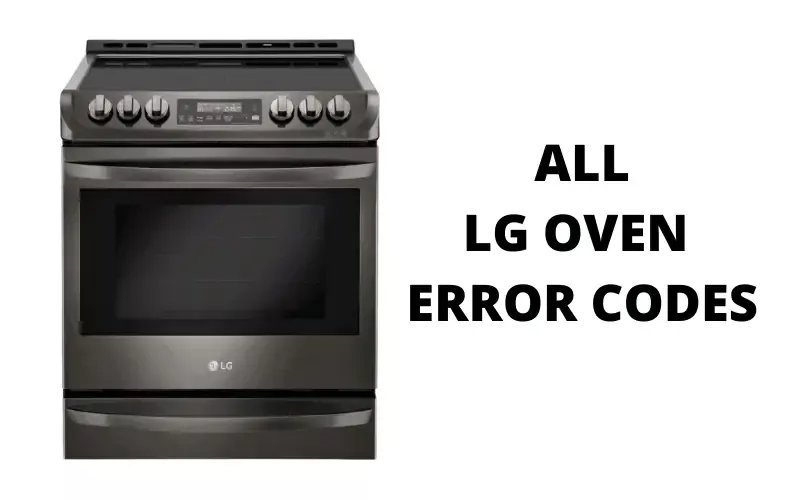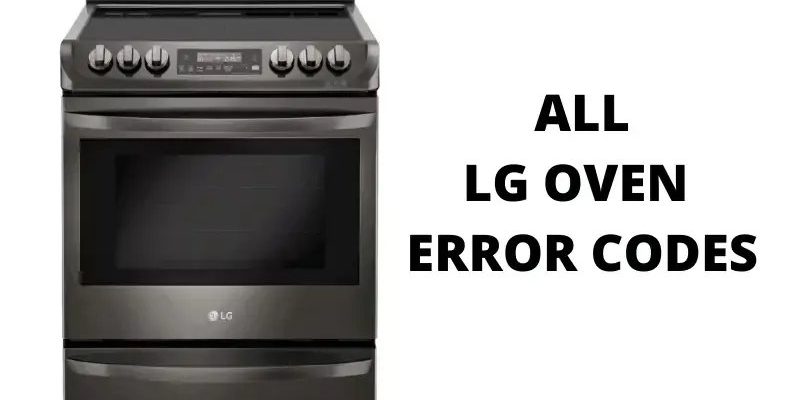
An E3 error code on your LG oven usually indicates an issue with the oven’s temperature sensor. It’s like when your thermometer isn’t quite working and you can’t tell if your soup is hot enough. This sensor plays a crucial role in regulating and maintaining the desired cooking temperature, ensuring your culinary creations are spot on. When this important component malfunctions, your oven alerts you with the E3 error code. So, before you start worrying about dinner plans or potential repair costs, let’s explore how to troubleshoot and fix this issue.
Understanding the E3 Error Code
Getting to know what the E3 error code is all about can save you a lot of headaches. Think of it as a detective tale where the error code is a clue to the mystery of your oven’s odd behavior. In this case, the mystery is usually tied to the temperature sensor, which might not be working as it should.
In simple terms, the oven’s temperature sensor is a device that tells the oven how hot it is inside. When it malfunctions, the oven can’t tell if it’s at the right temperature or not, kind of like trying to bake a cake without knowing the oven temperature. The E3 code is the oven’s way of waving a red flag and asking for help. Now, why does this happen? It could be due to various reasons, such as a loose connection, a faulty sensor, or even a temporary glitch in the system.
Before you panic about the cost of repairs or replacements, it’s important to understand that sometimes, simple steps can resolve the issue. In many cases, just like rebooting a computer when it’s acting up, resetting your oven might just do the trick.
Steps to Reset Your LG Oven
Here’s the deal: resetting your LG oven is much like giving it a fresh start. Imagine it as turning your oven off and on again, but in a slightly more specific way. Resetting can often clear out temporary glitches that might cause the error to appear. Let’s break down the steps to reset your oven.
First, ensure safety is your top priority. Start by unplugging the appliance to disconnect it from the power source. This is akin to letting your computer cool down after it’s been running too long. Leave it unplugged for about five minutes. This short break allows the oven to power down completely and can help in resetting its internal systems. Once the time is up, plug your oven back in and turn it on.
Next, see if the error code is still present. If it has disappeared, great! You’ve likely resolved the issue. If it remains, there’s no need to worry yet. We’ve got more tricks up our sleeves.
Checking the Temperature Sensor
If resetting your oven didn’t do the trick, the next logical step is to examine the temperature sensor. This might sound technical, but think of it like checking why a plant isn’t thriving—you need to look at its roots.
Locate your oven’s temperature sensor—it’s usually found at the back of the oven interior. With the power still off, gently inspect the sensor. Look for any signs of damage or disconnection. Remember, the sensor is like the thermometer of your oven, and it needs to be properly connected to do its job.
If you’re comfortable doing so, remove it carefully and check for continuity using a multimeter, an instrument that checks electrical connections. You might be wondering, “What’s continuity?” It’s simply the sensor’s ability to conduct electricity properly. If the sensor shows no continuity or seems damaged, it might be time to consider a replacement.
For those not as handy or comfortable with electrical components, calling a professional is a wise choice. They can help determine if the sensor is truly the culprit or if something else is amiss.
Preventing Future Error Codes
Now that you’ve tackled the E3 error code, let’s look at some steps to prevent similar issues in the future. Think of it like regular maintenance for your car—just as you wouldn’t ignore an oil change, keeping tabs on your oven’s health is key.
First and foremost, make it a habit to clean your oven regularly. Debris or food particles can sometimes interfere with the oven’s components and sensor function. Keeping a clean oven is like having a tidy workspace; it makes everything function more smoothly.
Additionally, check your oven’s connections and components periodically. Just like checking a bike’s tires and brakes before a long ride, ensuring everything is in working order can help prevent unexpected problems. Finally, be gentle with your appliance. Avoid slamming the door and ensure that nothing heavy or damaging is placed inside.
There you have it, a comprehensive guide to resolving the E3 error code on your LG oven or range. Remember, these appliances are here to serve you, and understanding a bit more about how they work can keep your kitchen running smoothly. If you encounter the E3 error in the future, you’ll be more than ready to tackle it head-on!
